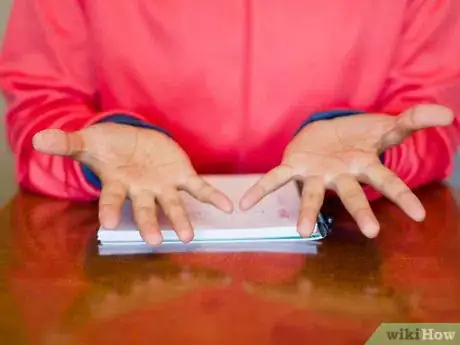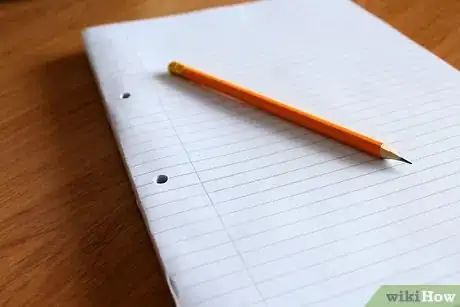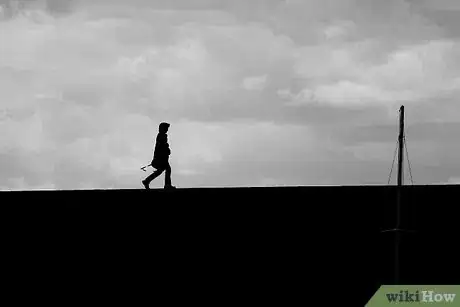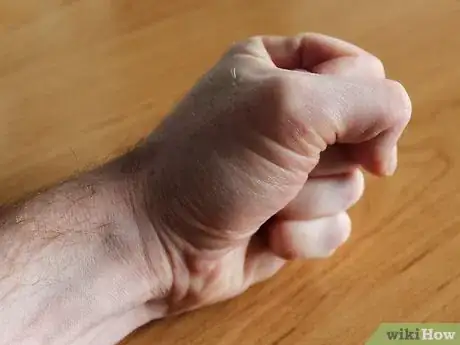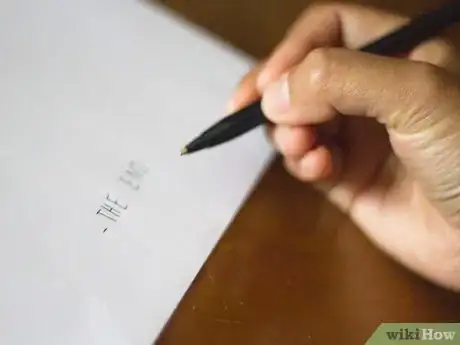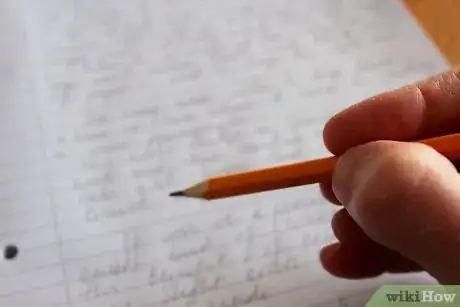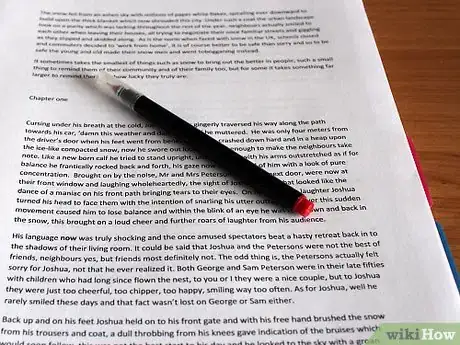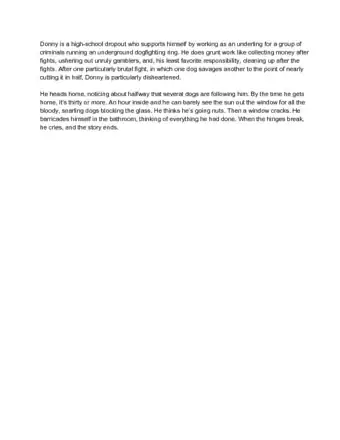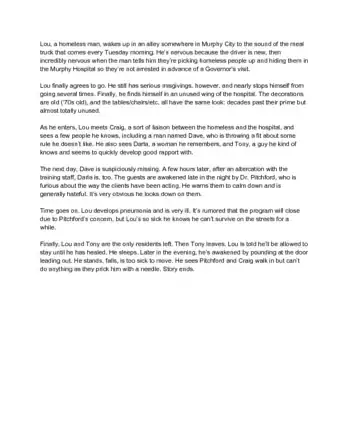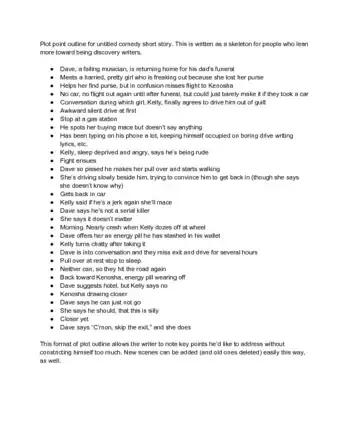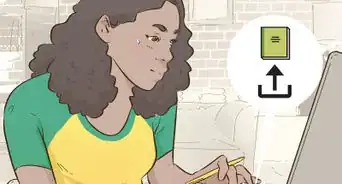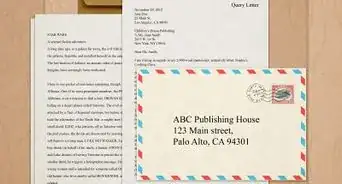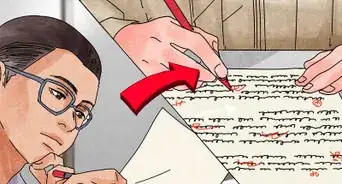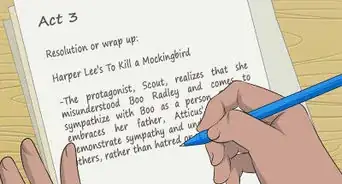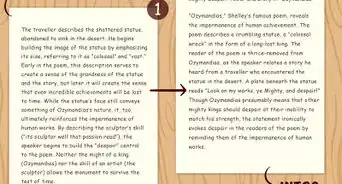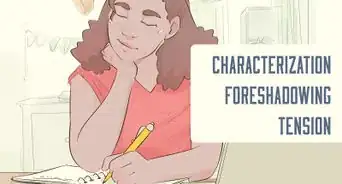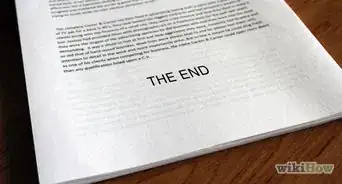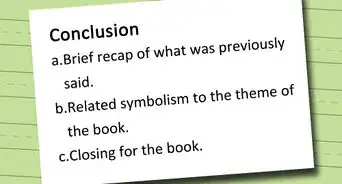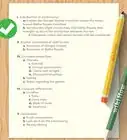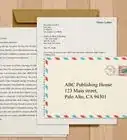This article was co-authored by Lydia Stevens. Lydia Stevens is the author of the Hellfire Series and the Ginger Davenport Escapades. She is a Developmental Editor and Writing Coach through her company "Creative Content Critiquing and Consulting." She also co-hosts a writing podcast on the craft of writing called "The REDink Writers." With over ten years of experience, she specializes in writing fantasy fiction, paranormal fiction, memoirs, and inspirational novels. Lydia holds a BA and MA in Creative Writing and English from Southern New Hampshire University.
There are 8 references cited in this article, which can be found at the bottom of the page.
wikiHow marks an article as reader-approved once it receives enough positive feedback. In this case, 100% of readers who voted found the article helpful, earning it our reader-approved status.
This article has been viewed 204,896 times.
A good plot is all about organizing ideas in a way that is appealing to the reader. It is also, and more importantly, the guideline that helps the author make sure he doesn't get lost on all of the ideas and characters that start to come up whilst the book is written. The following is a simple guide on how to create a somewhat original plot.
Steps
-
1Brainstorm. At this point, a good notepad may be the best way to get the ideas flowing. It's useful to write long sentences, loose words, or entire paragraphs, because all can come in handy when you tackle the actual plot. Reading is also very important, as it is the main source of inspiration, although films, television, paintings, and even people can also inspire.[1]
- Identify what you want to write about. Think whether it should be a comedy, action, mystery, romance, adventurous, or nonfiction.
-
2Start connecting the concepts and ideas. Once you think you have enough ideas to start building the plot, you can join the ideas. Diagrams are of great use in this process. For example if you have pineapples and elephants, you could have an elephant eat pineapples.Advertisement
-
3Ask yourself questions. What would be unexpected if this happened? What will get people to read this book? Would I be interested in this book? What is missing? What do people want to hear in a good book?
-
4Get the outline of your characters. Characters at this stage are very simple, and are very much alike. You should not worry as much with their creation now, as to their function on the story. Who's the protagonist? Who's the villain? Does the story have a villain? If yes, is he truly horrific, or just a nuisance? Those are the questions that need to be answered at this point.
-
5Choose your type of plot. Although not publicized, some plots are non-linear, which means they can go back and forth in time without things like time machines being needed. If you choose to write such a plot, make sure that every excerpt is chronologically coherent with the rest. You don't want to say that he was in the cave (in the future), and then get to that point, and leave him being in his backyard. In non-linear plots, it's better to leave time references out of the question until the end of the book, to avoid confusion.[2]
-
6Imagine the setting. The plot will need to take place somewhere, and as such, the place you set it is as important as who features in it. If you intend to place your story on an already existing place, it'll be easier, as you only have to imagine little parts, and not have to focus on the big picture, as that is taken care of by reality, and you can jump the next step. If by contrast yours is a story that takes place in an entirely fictionalized setting, keep on reading.
- Always remember the number one rule: show, don't tell. Describe everything in detail, transporting your reader to the location with a very tactile experience. For example, instead of simply saying that the story takes place in a red barn, describe the peeling paint, the rust that is forming and the pink shade on the walls that was caused by the sunlight.[3]
-
7Creating your setting from scratch. In creating a new setting, it will require that you imagine every single detail. Don't oversee little things like where people shall work, or how people walk down the street, as those can be of great value in the future. You'll probably get many more details than you'll ever use, but as always it's better to get more than less. In science fiction and fantasy stories, things like the physics that control the world, society stratification, and the average person are all to be taken in account as serious matters.
-
8Finalize your characters. Here is where you truly create your characters, leaving nothing to be said. As in creating a setting, you'll get much more than you need, but that may come in handy if you then reuse the character later. Once again, a notepad will do greatly in getting the character as developed as possible. Ask questions like "What is the reason why he dresses this way?", and then get the answers down. Take into account also that a good character is one that evolves over time, so try to make them as flexible as possible (not overdoing it, or they'll seem unsure of their own choices). Try to imagine possible interactions between characters, and links like friendship or family. Get the best out of every character.[4]
-
9Understand causality. Every action has a reaction, and as such no events are random (unless the point is to illustrate the randomness of it all, of course).
-
10Choose a conflict.[5] By now you should have probably started writing, although it is not strictly obligatory, and as such you should get the main conflict, or in other ideas, what makes the characters do what they'll do. In the beginning no such guideline is needed, but it is required later on, for the progression to be logical.
- A lot of good stories end up falling short from their potential for a lack of interesting conflicts. The more conflict you can pile onto your main character, the more attention grabbing your work is going to be.[6]
- Take your main character and make something really awful happen to them, and then make something even worse happen. There has to be some struggle for the protagonist to overcome his challenges and conflicts.[7]
-
11Get the hang of rising action. Rising action is the sequence of events that ultimately leads to the climax. It is normally longer than it's counterpart, the falling action, and shows development in the characters personality. This should be the portion of the plot you should worry most, as it is the one that leads to a weak climax, if not written correctly. As such, have your characters face several challenges, in which they can either be shown with their full potential, or even expand it.[8]
- Remember to pace your story. For example, you don't want to give all your characters' backgrounds in the first pages, or the reader won't care for the climax. You need to be able to weave character development, action and dialogues in a natural way.[9]
-
12Create the climax. This is the moment in which your characters will face their ultimate challenge. All fiction stories have a climax, at some point, except for somewhat humorous ones, which resolve in anti-climaxes (normally a resolution that is too simple, and thus sound unsatisfactory: "I faced the dragon with my sword, but it died out of breast cancer" please don't use one of these). Normally it involves all of the characters, and occurs near the end of the story (except if the plot is non-linear, by which case it can occur nearly anywhere, even in the first few lines) and is a moment in which the protagonist seems defeated, and suffers an almost miraculous recovery.
- Avoid ending the book with the answer given. Leave it with a mystery, or something that has not been answered yet. This will get them searching for more of your books, perhaps asking you to make more! They want to know the answer, and of course, you will get more viewers this way.
-
13Create the falling action. Before the end of the book, if you feel like it, you should let the action smooth in a little, and tell the readers what has happened to the characters since the climax. This is where the things start to get into place once again, and life is calm again. Do not underestimate the importance of it though, as stories that don't have a proper conclusion can be the most revolting thing you'll ever see.[10]
-
14So you're this far. By this point, you should have the basic outline of the full plot. If so, it's time to get back to organizing your thought process (hope you've kept the notebook, because it does get handy a lot of times). If you're that kind of person, do sketches, maps, timelines, or even write poems about your story, as it gets you in the mood to fully love what you have developed. But don't think the job is done. You only have the basic outline, that is something easy to do. The part where the basic plot becomes the good plot, is at the next stage.[11]
-
15Apply color. Writing techniques which vary from clever plot twists, to known artifices like the Chekov's gun (when an object appearing to be insignificant later resolves the conflict) or the not so appreciated Deux Ex Machina (which is a resolution that appears to come out of the blue: "We were falling to our death, when a blue goat saved us and blasted the evil genius's balloon with its laser beam eyes"). With a combination of these and lots of metaphors, similes, and personifications you'll get the best out of your plot.
-
16Rest a bit while looking at the finished outline.[12]
-
17Get back to work. Now it's time to revise what you wrote. Make sure there are no anachronisms, incoherences with your own rules and laws, and that your characters stay consistent (they may evolve in terms of personality, but have to stay consistent with themselves, as keeping the same hair color, or the same height). If you find a main problem, and find that it ruins your entire plot, don't be afraid to change everything. One error can be difference between a good plot, and a plot outline.
-
18If you haven't started writing, now is probably the time...
Expert Q&A
-
QuestionHow do I start writing a story?
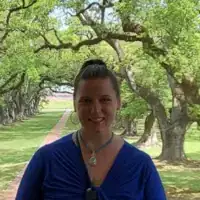 Lydia StevensLydia Stevens is the author of the Hellfire Series and the Ginger Davenport Escapades. She is a Developmental Editor and Writing Coach through her company "Creative Content Critiquing and Consulting." She also co-hosts a writing podcast on the craft of writing called "The REDink Writers." With over ten years of experience, she specializes in writing fantasy fiction, paranormal fiction, memoirs, and inspirational novels. Lydia holds a BA and MA in Creative Writing and English from Southern New Hampshire University.
Lydia StevensLydia Stevens is the author of the Hellfire Series and the Ginger Davenport Escapades. She is a Developmental Editor and Writing Coach through her company "Creative Content Critiquing and Consulting." She also co-hosts a writing podcast on the craft of writing called "The REDink Writers." With over ten years of experience, she specializes in writing fantasy fiction, paranormal fiction, memoirs, and inspirational novels. Lydia holds a BA and MA in Creative Writing and English from Southern New Hampshire University.
Author & Developmental Editor If you want inspiration, look at some art or listen to music. This can surely help you develop settings, characters and dialogues. Getting in touch with yourself and going back to some childhood activities can also work.
If you want inspiration, look at some art or listen to music. This can surely help you develop settings, characters and dialogues. Getting in touch with yourself and going back to some childhood activities can also work. -
QuestionWhat are the qualities of a good plot?
 Lydia StevensLydia Stevens is the author of the Hellfire Series and the Ginger Davenport Escapades. She is a Developmental Editor and Writing Coach through her company "Creative Content Critiquing and Consulting." She also co-hosts a writing podcast on the craft of writing called "The REDink Writers." With over ten years of experience, she specializes in writing fantasy fiction, paranormal fiction, memoirs, and inspirational novels. Lydia holds a BA and MA in Creative Writing and English from Southern New Hampshire University.
Lydia StevensLydia Stevens is the author of the Hellfire Series and the Ginger Davenport Escapades. She is a Developmental Editor and Writing Coach through her company "Creative Content Critiquing and Consulting." She also co-hosts a writing podcast on the craft of writing called "The REDink Writers." With over ten years of experience, she specializes in writing fantasy fiction, paranormal fiction, memoirs, and inspirational novels. Lydia holds a BA and MA in Creative Writing and English from Southern New Hampshire University.
Author & Developmental Editor Although conflict may be the number one thing to captivating story, it's not the only thing you need to consider. A good plot also needs pacing, the right tone and great characters, with different aspects of their backgrounds sprinkled throughout the story. Try to create a layered work.
Although conflict may be the number one thing to captivating story, it's not the only thing you need to consider. A good plot also needs pacing, the right tone and great characters, with different aspects of their backgrounds sprinkled throughout the story. Try to create a layered work. -
QuestionI'm a new writer, is there any way I can get someone to help me think of plots? My audience is young adults.
 Community AnswerRead the popular young adult books. Look at the key features in each. They tend to contain action, romance, and maybe science fiction or supernatural elements. You could also talk to some young adults and see what they like/look for in a good book.
Community AnswerRead the popular young adult books. Look at the key features in each. They tend to contain action, romance, and maybe science fiction or supernatural elements. You could also talk to some young adults and see what they like/look for in a good book.
Warnings
- Never, ever, ever, scrap an idea just because it looks silly. One man's silly idea is the other one's brilliant masterpiece.⧼thumbs_response⧽
Things You'll Need
- A pen or pencil
- A notepad
- Imagination
- Patience
- Ability to go long periods without food or water (not strictly necessary, but advisable in order to write a good plot)
References
- ↑ https://writingcenter.unc.edu/tips-and-tools/brainstorming/
- ↑ https://www.grammarly.com/blog/story-plot/
- ↑ Lydia Stevens. Author & Developmental Editor. Expert Interview. 1 September 2021.
- ↑ https://usv.edu/blog/character-development-writing-tips-make-fictional-characters-come-alive/
- ↑ Lydia Stevens. Author & Developmental Editor. Expert Interview. 1 September 2021.
- ↑ Lydia Stevens. Author & Developmental Editor. Expert Interview. 1 September 2021.
- ↑ Lydia Stevens. Author & Developmental Editor. Expert Interview. 1 September 2021.
- ↑ https://owl.purdue.edu/owl/subject_specific_writing/creative_writing/creative_nonfiction/index.html
- ↑ Lydia Stevens. Author & Developmental Editor. Expert Interview. 1 September 2021.

